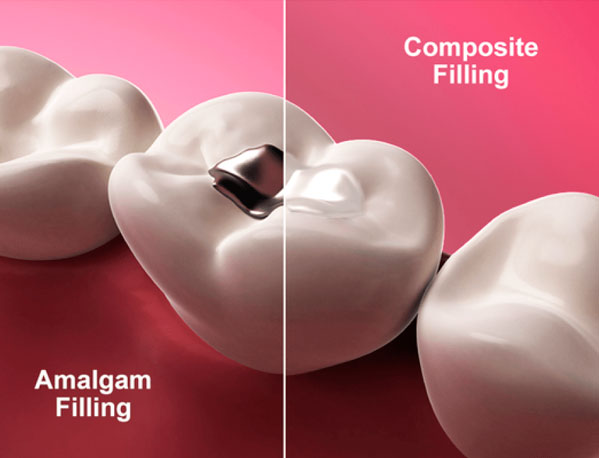
Composite Fillings and Restorations
When our dentists diagnose a cavity, they will remove the decayed portion of your tooth completely and fill it with a bio-compatible dental material. There are multiple options for the material to be used in the filling, the most common of which are composite fillings and amalgam fillings.
A composite filling is also known as a tooth colored filling, since the material used in the filling can be closely matched to the color of your teeth. Our highly trained, board certified staff will match your shade perfectly, attempting to restore the tooth to its natural color. Composite fillings provide good durability for small to medium cavities, and the procedure typically involves removing less of a tooth than you would during an amalgam filling. They are also particularly well suited for treating front or highly visible teeth, especially in the front teeth due to their natural look. Composite restorations can also be used to treat chipped or broken teeth.
What to expect in a Composite Filling step-by-step
After the dentist completely numbs the area where the filling is to be placed, they will remove any decayed portions of your tooth. A substance is then applied to help bond the restoration firmly to your tooth. The material is hardened by a special blue light. Once this stage is complete, the bio-compatible restoration is applied in multiple layers to ensure complete bonding and hardening of the material. After the material is applied, the filling will be smoothened and polished to match the natural esthetics of your smile. Our expert dentists can contour the new restoration to match your smile perfectly.
Amalgam Fillings and Restorations
Amalgam fillings, also known as silver-colored fillings, are made from a combination of metals such as tin, copper, silver and mercury. This combination of metals gives amalgam its renowned strength and durability. These fillings usually last between 10 – 15 years compared to composite fillings which typically last about 5 years. Because of its strength, these fillings are particularly useful for use on the molars in the back of the mouth, where the most chewing occurs. Its silver color is also less visible when placed on molars in the back of the mouth. As an added benefit, amalgam fillings are typically more cost effective than composite “white” fillings.
What to Expect in an Amalgam Filling Step-by-Step
After the dentist completely numbs the area where the filling is to be placed, they will remove any decayed portions of your tooth. Once that is complete, the tooth is prepared in a specific way to accept the filling. The amalgam restoration is then placed into the tooth. A band is sometimes placed around your tooth during the process to help aide in placement of the material. The filling is then adjusted and polished to fit your bite for maximum comfort. These restorations are a fantastic dental procedure and have been used for many years with very high success rates. However, on rare occasions the tooth or teeth filled with amalgam can experience a period of temporary sensitivity to hot and cold. This sensitivity will subside after the tooth adjusts to the new filling. Additionally, amalgam fillings do not harden instantaneously, and it’s advisable to avoid chewing in that area for a few hours. Make sure to consult your dentist to understand which type of filling is right for you.

